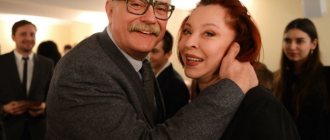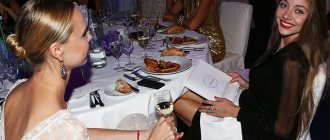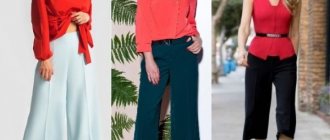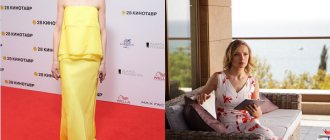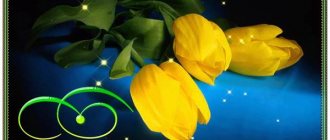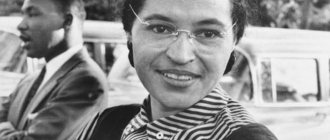Most Popular Styles
Men's clothing should reflect your temperament and lifestyle. Young people prefer street or casual style, businessmen prefer business style, strong and brutal people prefer sporty style. Let us briefly describe the main differences between each direction. This way you will know what works best.
Office style is appreciated by enterprising business people. The clothes are as discreet, elegant, and of high quality as possible. Classic suit, shirt or shirt, boots, tie. Everything is in pastel colors.
Street fashion is preferable for risky, creative individuals who go beyond the usual boundaries, young people. Allows both a basic duo of jeans and a T-shirt, as well as experimental combinations of shirts with sneakers. Do you like simplicity, freedom, self-expression? Then this is the place for you!
Casual will help you put together a universal fashionable wardrobe with a combination of different trends. This style is a kind of propaganda of freedom from the strict boundaries of fashion. Choose an elegant but simple comfortable look for everyday walks. Complete your closet with formal, formal suits for work.
Sports style is liked not only by professional athletes. You don't have to join a gym or go for a run. Recently, this trend has been loved by all men who value simplicity and convenience. The main differences between this fashion: sports shoes, knitwear.
Romantic fashion is popular among creative, creative individuals. The main difference is the layering and slight carelessness, light shades. A shirt is worn over a T-shirt, skinny trousers with a fitted jacket, a cardigan, etc.
Vintage (retro) surprisingly has many fans among men. Nowadays many clothing lines are produced with simple models or outrageous collections.
Hippie for fans of the 70s is distinguished by a simple cut, pleasant to the touch texture, and spacious styles. Such clothes are made from natural fabrics and complemented with geometric, ethnic, prints with plants and animals.
Rating of the 100 most stylish men according to GQ magazine
On February 12, GQ gathered guests for an evening in honor of the announcement of the “100 Most Stylish Men.” The venue for the party was the penthouse of the new club house on Patriarch's Ponds "Malaya Bronnaya 15" from the company Realty4Sale . The award location acquired a special charm thanks to the decor from Shakirova Studio . The laconic combination of black, white and gray colors was complemented by metal details.
Photo: courtesy of Condé Nast Russia agency
For objective reasons, it was not possible to transfer the prizes from hand to hand to each participant on the list. Igor Garanin, presented awards in the form of the letters GQ At the SimpleWine , guests raised their glasses to the most stylish hundred wines of the outstanding hockey player Igor Larionov and cocktails from the legendary French house Hine . And 354 Cateriing of the restaurant group of Alexey Vasilchuk treated the audience to profiteroles with trout, wasabi shrimp, roast beef with artichoke mousse and Moscow cakes.
Photo: courtesy of Condé Nast Russia agency
The first to take the stage to receive the award was actor Nikita Kovtunov , who is very fond of plain two-piece suits. He was replaced by restaurateur Igor Vitoshinsky , who mastered the classics of the Italian mafia and sowed the acquired knowledge among Moscow gourmets. Then the presenters, represented by Igor Garanin and the magazine publisher Irina Elizarova, announced the artist Pokras Lampas , because he cannot be confused with anyone: a long coat, massive rings, an oversized scarf and bright hair.
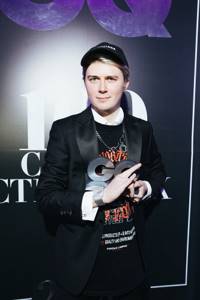
Photo: courtesy of Condé Nast Russia agency
Next, the award went into the hands of the athlete Igor Larionov, who always reminds of the main rule: with a blue suit, especially an unpaired one, do not even think about wearing black boots. The next actor to receive his statuette was Nikita Kushushkin , who devotedly loves bright costumes.
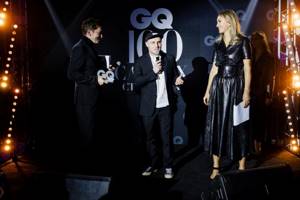
Photo: courtesy of Condé Nast Russia agency
And another representative of the list of the most stylish was recognized as the director and cover hero of the March issue of GQ Kantemir Balagov , who, having moved to Moscow after the triumph of “Tightness” , became a true hypebeast.
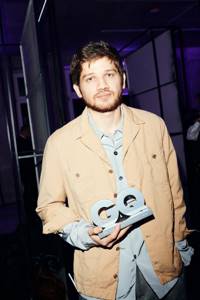
Photo: courtesy of Condé Nast Russia agency
Zivert began her performance . The evening ended with dancing to the sets of DJ Vitaly Kozak .

Photo: courtesy of Condé Nast Russia agency
The magazine's list of "100 Most Stylish Men" In Russia, the list of “100 Most Stylish” has been published since 2007 in the March issue of the magazine. It includes 50 Russian and 50 international names. Over the past years, the leaders of the rating have been Fyodor Bondarchuk, Vladimir Spivakov, Oleg Yankovsky, Stepan Mikhalkov, Vladislav Doronin, Hugh Laurie, Tom Ford, Clive Owen, James Franco and others.
Subscribe to us in Yandex News
Efremov admitted his guilt. Faces 11 years
VKontakte0 Facebook
Persons and themes
Selecting clothes according to your figure
The main rule for a successful choice: dress according to your figure! The same model will emphasize the height and external data of one person, but will make the image ridiculous for another. There are four types of male figures with their own characteristics:
- Rectangular body type with a problematic waist. Such men should wear shirts, jumpers, straight-cut T-shirts, single- or double-breasted jackets. But it is important to find something that will visually expand and stretch the figure upward. It is better to choose trousers with a low waist, jackets with zippers rather than buttons, and straight-cut coats.
- An inverted triangle means narrow hips and waist, broad shoulders. Let's say minimalism: a T-shirt with jeans and a short jacket on top. Don't be afraid to show off your muscles and highlight your figure. Short shirts, slightly tapered trousers, and a fitted coat with a belt look good.
- A trapezoidal man cannot afford to wear tight-fitting clothes. We recommend choosing shirts with vertical stripes and pointed collars. Single-breasted jackets look good, trousers only with a high waist without creases. For outerwear, short coats or long jackets are preferred.
- The oval shape requires masking excess weight. No skinny trousers, jackets with geometric prints or round necklines. Jumpers and sweaters should have a loose fit so as not to draw attention to the stomach. For the same reason, replace the tie with a bow tie.

How to write a term paper on speech therapy
07.09.2010 177915
These guidelines are compiled to help students gain an understanding of the content and structure of coursework in speech therapy.
Logopedia of pedagogical science that studies anomalies of speech development with normal hearing, explores the manifestations, nature and mechanisms of speech disorders, develops the scientific basis for overcoming and preventing them means of special training and education.
The subject of speech therapy as a science is speech disorders and the process of training and education of persons with speech disorders.
The object of study is a person suffering from a speech disorder.
The main task of speech therapy as a science is the study, prevention and elimination of various types of speech disorders.
Coursework in speech therapy is a student's scientific and experimental research. This type of educational activity, provided for by the educational and professional program and curriculum, contributes to the acquisition of skills in working with literature, analyzing and summarizing literary sources in order to determine the range of insufficiently studied problems, determining the content and methods of experimental research, processing skills and qualitative analysis of the results obtained. The need to complete coursework in speech therapy is due to the updating of knowledge concerning the content, organization, principles, methods and techniques of speech therapy work.
As a rule, during their studies, students must write two term papers - theoretical and practical.
The first course work should be devoted to the analysis and synthesis of general and specialized literature on the chosen topic. Based on this analysis, it is necessary to justify and develop a method of ascertaining (diagnostic) experiment.
In the second course work, it is necessary to provide an analysis of the results obtained during the ascertaining experiment, as well as determine the directions and content of speech therapy work, and select adequate methods and techniques of correction.
So, let’s present the general requirements for the content and design of coursework in speech therapy.
The initial and most important stage of working on a course project is the choice of a topic, which is either proposed by the supervisor or chosen by the student independently from a list of topics that are consistent with the areas of scientific research of the department.
Each topic can be modified, considered in different aspects, but taking into account a theoretical and practical approach. Having chosen a topic, the student needs to think through in detail its specific content, areas of work, practical material, etc., which should be reflected both in the formulation of the topic and in the further construction of the study. It should be recalled that the chosen topic may not only have a purely theoretical orientation, for example: “Dysarthria. Characteristics of the defect”, “Classification of dysgraphia”, but also take into account the practical significance of the problem under consideration, for example: “Speech therapy work on speech correction for dysarthria”. It should also be taken into account that when formulating a topic, excessive detail should be avoided, for example: “Formation of prosodic components of speech in preschoolers of the sixth year of life attending a preschool institution for children with severe speech impairments.”
The course work includes such mandatory parts as: introduction, three chapters, conclusion, bibliography and appendix.
The text of the term paper begins with the title page . An example of its design can be seen here.
Then the content of the work is given, in which the names of chapters, paragraphs, and sections are formulated in strict accordance with the content of the thesis. An example of its design can be seen here.
In the text, each subsequent chapter and paragraph begins on a new page. At the end of each chapter, the materials are summarized and conclusions are formulated.
The introduction reveals the relevance of the problem under consideration in general and the topic being studied in particular; the problem, subject, object, and purpose of the study are defined. In accordance with the goal and hypothesis, objectives and a set of research methods aimed at achieving the objectives must be defined.
The relevance of the topic lies in reflecting the current level of pedagogical science and practice, meeting the requirements of novelty and usefulness.
When defining the research problem, it is important to indicate what practical tasks it will help to implement in training and educating people with speech pathology.
The object of research is understood as certain aspects of pedagogical reality, perceived through a system of theoretical and practical knowledge. The ultimate goal of any research is to improve this object.
The subject of research is some part, property, element of an object, i.e. the subject of research always indicates a specific aspect of the object that is to be studied and about which the researcher wants to gain new knowledge. An object is a part of an object.
You can give an example of the formulation of the object, subject and problem of research:
– The object of the study is the speech activity of preschool children with phonetic-phonemic speech disorders.
– The subject of the study is the features of intonation speech of children with phonetic-phonemic speech disorders.
– The research problem is to determine effective directions for speech therapy work on the formation of intonation expressiveness of speech in the system of correctional intervention.
The purpose of the study contributes to the specification of the object being studied. The goal of any research is to solve a specific problem. The goal is specified in tasks taking into account the subject of research.
The research objectives are formulated in a certain sequence, which determines the logic of the research. The research objectives are set on the basis of a theoretical analysis of the problem and an assessment of the state of its solution in practice.
The first chapter is an analysis of literary sources, which examines the state of this problem in historical and modern aspects, and presents the most important theoretical principles that formed the basis of the study.
When writing the first chapter, you should pay attention to the fact that the text of the course work must be written in a scientific style. When presenting scientific material, it is necessary to comply with the following requirements:
– Specificity – a review of only those sources that are necessary to disclose only a given topic or solve only a given problem;
– Clarity – which is characterized by semantic coherence and integrity of individual parts of the text;
– Logicality – which provides for a certain structure of presentation of the material;
– Reasoning – evidence of thoughts (why this and not otherwise);
– Precision of wording, excluding ambiguous interpretation of the authors’ statements.
A literary review of the state of the problem being studied should not be reduced to a consistent presentation of literary sources. It should present a generalized description of the literature: highlight the main directions (currents, concepts, points of view), analyze in detail and evaluate the most fundamental works of representatives of these directions.
When writing a work, the student must correctly use literary materials, make references to the authors and sources from which the results of scientific research are borrowed. Failure to provide required references will reduce your coursework grade.
As a rule, in coursework on speech therapy, references to literary sources are formatted as follows: the number of the cited source in the general list of references is placed in square brackets. For example: General speech underdevelopment is a speech pathology in which there is a persistent lag in the formation of all components of the language system: phonetics, vocabulary and grammar [17].
When using quotations, in square brackets, in addition to indicating the source number, the page number from which this excerpt is taken is indicated, for example: Speech rhythm is based on a physiological and intellectual basis, since, firstly, it is directly related to the rhythm of breathing. Secondly, being an element that performs a communicative function, “correlates with meaning, i.e. controlled intellectually” [23, P.40].
However, course work should not be of a purely abstract nature, so you should not abuse the unreasonable abundance of citations. Quoting should be logically justified, convincing and used only when really necessary.
In the second chapter , devoted to experimental research, the organization should be described and the program of the ascertaining experiment should be presented. The survey methodology, as a rule, consists of a description of several series of tasks, with detailed instructions, visual and lexical material, the procedure for completing tasks by experiment participants, and scoring criteria. This chapter also provides a qualitative and quantitative analysis of the results obtained.
When analyzing the results of an experiment, it is necessary to use a scoring system. Examples of various criteria for quantitative and qualitative assessment are presented in the following works:
– Glukhov V.P. Formation of coherent speech in preschool children with general speech underdevelopment. - M.: Arkti, 2002. - 144 p.
– Fotekova T.A. Test methodology for diagnosing oral speech of primary schoolchildren. - M.: Arkti, 2000. - 56 p.
– Levchenko I.Yu. Pathopsychology: Theory and practice. - M.: Academy, 2000. - 232 p.
In order to visually present the results obtained during the experimental study, it is recommended to use tables, graphs, diagrams, etc. Histograms can be used in a variety of ways - columnar, cylindrical, planar, volumetric, etc. An example of the design of tables, figures, and histograms can be found here.
The third chapter provides a rationale for the proposed methods and techniques and reveals the content of the main stages of correctional work.
The conclusion contains a summary of the material presented and the main conclusions formulated by the author.
The bibliography must contain at least 25 sources. The list includes bibliographic information about the sources used in preparing the work. An example of its design can be seen here.
In the application you can present bulky tables or illustrations, examination protocols, observation records, products of activity (drawings, written works of children), notes from speech therapy classes, etc.
The volume of one course work must be at least 30 pages of typewritten text.
In general, coursework in speech therapy is the basis for a future thesis, in which the study of the begun problem can be continued, but from the standpoint of a different approach or a comparative analysis of the disorders being studied in different age categories of people with different types of speech disorders.
The content and format of theses in speech therapy can be found here.
Literature:
1. How to write a term paper on speech therapy: Methodological recommendations. Educational and methodological manual / Comp. Artemova E.E., Tishina L.A. / Ed. Orlova O.S. – M.: MGOPU, 2008. – 35 p.
2. Research work of students in the system of higher professional pedagogical education (specialty 031800 - Speech therapy). Methodological recommendations for completing the thesis / Compiled by. L.V. Lopatina, V.I. Lipakova, G.G. Golubeva. - St. Petersburg: Publishing house of the Russian State Pedagogical University named after. A. I. Herzen, 2002. - 140 p.





